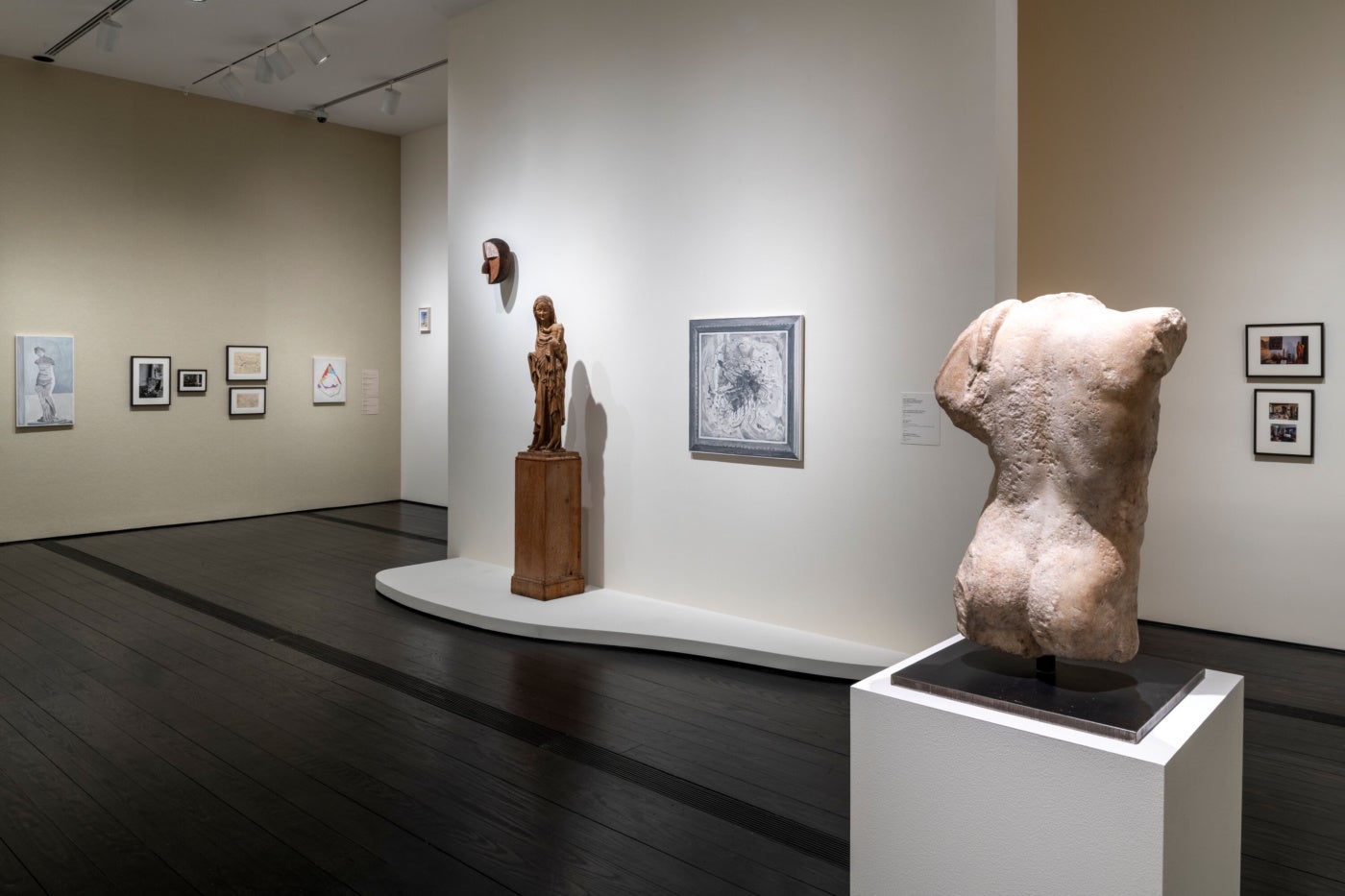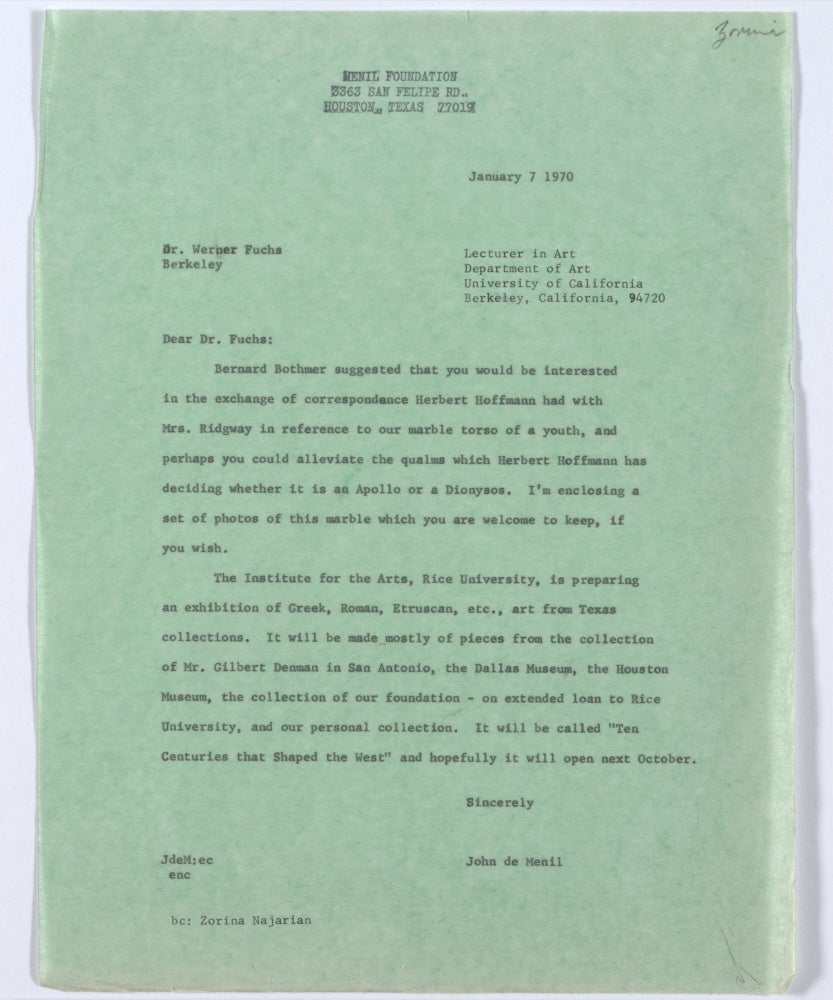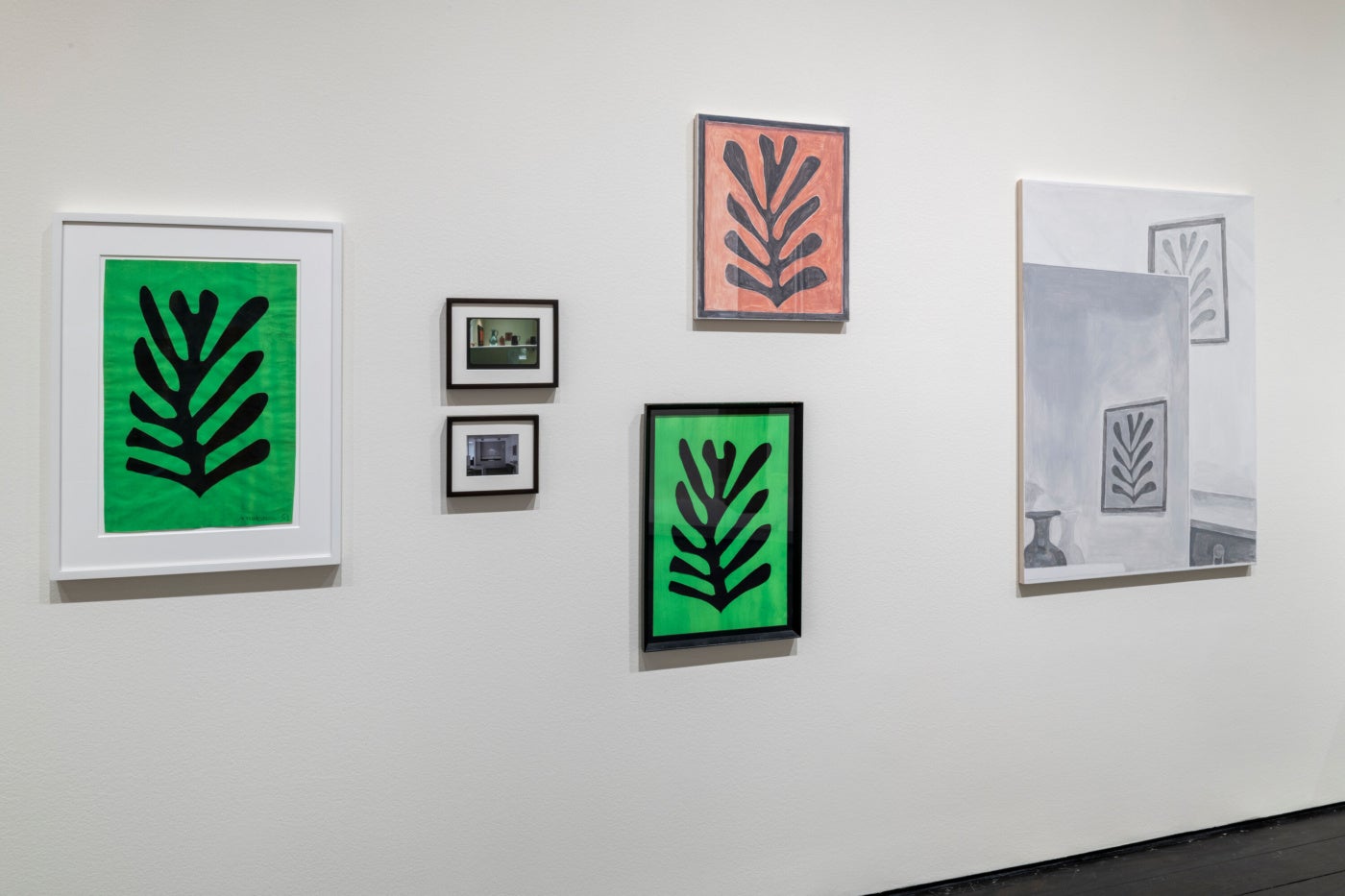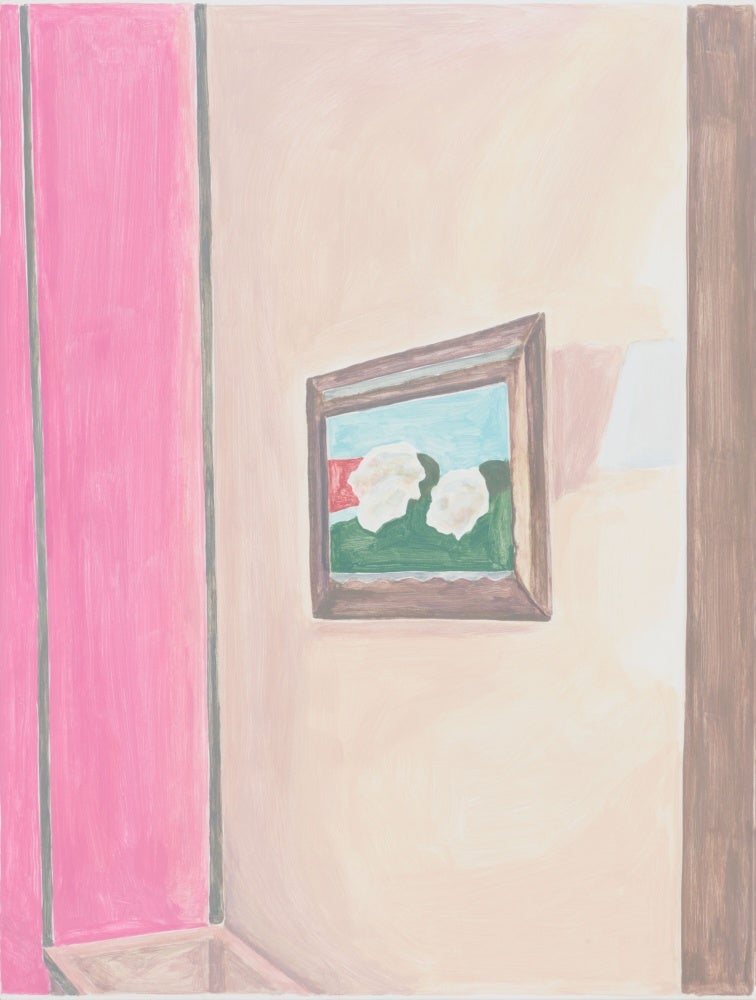
In 1970, art collector John de Menil wrote to German classical archaeologist Dr. Werner Fuchs about a Roman male torso in his collection, hoping to specify which god the sculpture depicted. In 2021, Houston-based artist Francesca Fuchs, daughter to the archaeologist, found an archival photograph of the same figure, sparking a hunt for and eventual discovery of the original letter in the de Menil holdings. The Space Between Looking and Loving: Francesca Fuchs and the de Menil House is Fuchs’ effusive yet delicate response to the unanswered correspondence in her father’s personal effects.
The entrance is hand-painted by the artist in butter yellow and muted brown, and an interior wall is surfaced in felt to mimic John and Dominique de Menil’s home. Featured prominently is the Roman male torso in question, while other objects included are culled from a range of time periods. The list includes: a Charles James sketch of a Chaise Longue; a Duma, Mbete, or neighboring peoples Mask; a ceramic owl, made by Fuchs as a child from her parent’s home; a mirror from the de Menils; a photograph of the Fuchs home; a photograph of the de Menil home; a note found inside a black-glazed water vessel alongside that very same Black-glazed water vessel; a Medieval statue of the Virgin and Child; and a wall of postcards and notes from the de Menils that appears like the family’s refrigerator door.

The accumulation of materials are unified by the tender eye that arranges and recreates them. Accompanying the items are paintings of the very same objects as rendered by the artist. A noteworthy example demonstrates the thread Fuchs and Menil Curator of Collections Paul R. Davis are pulling, a group of Matisse and Matisse-inspired fronds: a William Steen painting after Henri Matisse, Black Leaf on Green Background (1995); an unattributed photograph of de Menil House from 1954 that includes a Matisse frond in the background; and Fuchs’ own acrylic recreation of Red Matisse (2024). The artist’s means of translation is anti-Trompe-l’œil. With gusto, the style is wavy, muted, flattened, and lacking in precision. Made from memory, all edges are softened, vaseline over the lens for the painter and the viewer alike. In subject, the works are nesting dolls, dependent on one another or serving as co-signatories, validating their existence while also chipping off bits of any uniqueness of singular objects.
Paintings, likened to windows, are often presumed to be looking from the interior out. However, this show reorients, supposing the viewer is standing outside the window, the house, devotedly looking in. For Fuchs, the journey is inverted, items from her home are rarified by crossing the threshold into the public museum space. By examining the domestic in this way, new importance is bestowed to objects, as home viewership is understood to be habitual, casual, and perhaps performed while eating cereal. What is omitted from either vantage point, outside of standard wall labels, is the life of the objects prior to the possession of the collector, presumingly fraught journeys when changing hands, and with them, power. In this case, the life of the object starts at the moment of collection.

The question of origination differentiates Fuchs from many other archival exhibitions. Rather than mining the archive, Fuchs’ approach feels most familiar to Carissa Rodriguez’s 2018 work The Maid. In the video, Rodriguez documents the homes and storage spaces of collectors who possess Sherrie Levine’s sculptures Newborn (1993,1994), which are based on Constantin Brâncuși’s Newborn (1915, 1920). Slow moving frames reveal opulent penthouses and white-gloved preparators unwrapping the cast works. Both Rodriguez and Fuchs call upon the archive, not with an attempt to intervene or reimagine, but instead to replicate and in doing so, trace creative parentage and artistic progeny, a record of who begat whom.
One particular work serves as a key, revealing the artist’s guiding perspective on aura. Magenta Ernst (2024) employs Fuchs’ signature touch, depicting a softly receding wall adorned with the recognizable Max Ernst work, Shell Flowers (Fleurs coquillages) (1933). The Ernst painting, an original included in the Menil collection and the exhibition, is also repainted by Fuchs in greater detail elsewhere in the show. For the artist, accumulation is care in reiteration. The aura, as Walter Benjamin describes it in his 1936 essay The Work of Art in the Age of Mechanical Reproduction, is toyed with and complicated. Reproduction, executed by hand, still alters or performs uniqueness even when cohabitating with originals. In this work, Fuchs’ replication, born of emotional examination, is framed by a shock of blush pink in the painting. The pink extends out to the gallery wall, diffusing the left side of the work. In the artist’s hands, the aura itself is duplicated in meaning, serving as both signifier of origin and visible glow. A tale of two auras.





